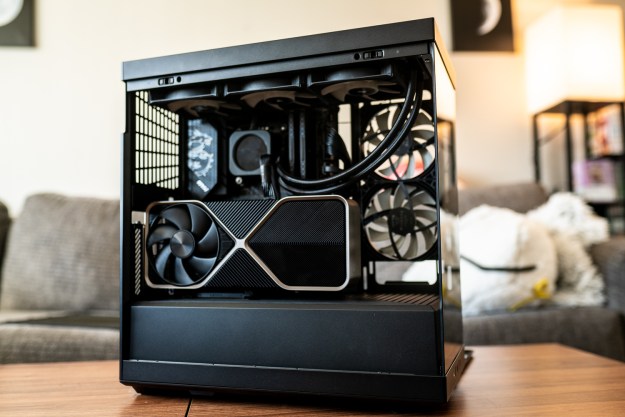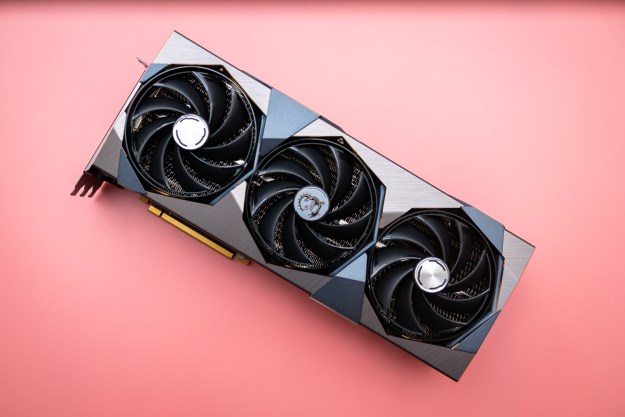Picking out a good power supply is a lot more challenging than it might seem at a glance. While there are always plenty of reviews of some of the best processors and top graphics cards, Power supply units (PSUs) tend to be a little overlooked. Still, the power supply should never be an afterthought when you’re building or buying a new PC.
There are a few important rules to follow when you’re picking out your PSU, ranging from making sure it fits your build to ensuring that it can handle power spikes and future upgrades. Here’s everything you need to know when shopping for a power supply.
The importance of the PSU

The PSU and the cooler are the two most overlooked components in any PC build, although arguably, the PSU has it the worst. The cooler can sometimes come with flashy RGB effects that help it draw extra attention, but the PSU is a part that we buy because we have to, but we pay little attention to it. And for some builds, that’s going to be just fine. For others, ignoring the importance of the PSU can have disastrous consequences.
As the name itself suggests, the power supply delivers power to your entire desktop, and picking the wrong model can affect every part that it’s connected to. If your components are not supplied as much power as they need, or the power they receive is unstable, a lot of things could go wrong.
Voltage fluctuations and power surges can result in damaged components, and that includes some of the most important parts of your PC, such as the motherboard, the CPU, or the GPU, not to mention storage devices. Fire or electrical hazards can occur, but most commonly, you’ll just end up with a broken component and a PC that won’t power on.
Similarly, your PSU might have enough power to keep your PC running when you’re not doing much, but once the GPU and the CPU begin to draw more power, it can struggle. As a result, your PC will often turn off, seemingly at random. Every time something like this happens, the life span of the components takes a small hit until, little by little, they eventually break down.
If your PC is running into issues, your best bet is to do some troubleshooting to figure out whether the PSU is the culprit. If it is, just swapping it out alone might help tremendously.
The way to prevent all of this is to spend some time thinking about the PSU in your build. Spending a little more money, or even spending the same amount, but on a better product, can go such a long way when you buy a power supply. Here’s what you need to consider when you pick out a PSU.
Things to consider when buying a PSU

A bite-sized PSU buying guide is that you need to look at the wattage, the efficiency rating, the form factor (and thus, the size), and lastly, the connectors when you buy a PSU.
As you can see, there aren’t that many things to be mindful of, but the ones that matter are often really important. It all comes down to whether a particular power supply will work with your build and if it’ll be capable of handling it when you’re pushing it to the limits (and then some). Let’s dive a little deeper into all of these factors.
Wattage
Wattage is the obvious, and most important, point of consideration in a power supply unit. It determines the total power output of your PSU. In simple terms, a 500-watt PSU can provide up to 500 watts of electrical power, and this is distributed across various rails (or circuits). As an example, there’s a 12-volts rail for the CPU and the GPU and a 5V rail for other components. Individual rails can be more or less efficient than this, but unless you’re a professional overclocker, you’re unlikely to need to dig deeper into this.
It’s also worth noting that PSUs are usually most efficient at certain loads — typically 50% to 70% of their maximum wattage. Efficiency comes down to how much power is used for your components, and how much is wasted in the form of heat generation. Again, unless you’re min-maxing for efficient power usage, this isn’t something you’ll need to think of when shopping.
Lastly, there’s peak versus continuous wattage. Some PSUs advertise peak wattage, which is the wattage that they can sustain for short periods if necessary. Don’t rely on this when calculating how much power your PC needs. Only go by continuous wattage.
We’ll go into how to calculate how much power your PSU needs in a separate section below.
Efficiency ratings
All PSUs come with efficiency ratings, which essentially estimate a particular unit’s power delivery efficiency. Less efficiency equals more heat, which is never a good thing.
When you’re buying a PSU, nearly all of them will be at least 80 Plus certified. This means that the PSU is guaranteed to be at least 80% efficient when running at 20%, 50%, and 100% of its rated load. It converts 80% of the power it receives into power that can be used by your PC, and the rest is dissipated in the form of heat.
The most common efficiency ratings you’ll find include the following:
- 80 Plus
- 80 Plus Bronze
- 80 Plus Silver
- 80 Plus Gold
- 80 Plus Platinum
- 80 Plus Titanium
The general rule of thumb here is that the more efficient the PSU, the better. In a budget PC that won’t consume much power or generate a lot of heat, you can still get away with a cheap Bronze PSU. However, if you’re building a gaming PC or a computer capable of handling heavy workloads, we recommend using at least a Gold or Platinum PSU. Those tend to be much more expensive, however, so keep that in mind when building your budget.
As a side note, if you’re ever buying a prebuilt PC, the efficiency rating is one of the things that might be low in such a computer. To save some money, manufacturers tend to use low-quality PSUs in prebuilts, which is why it’s important to only buy a computer that comes with an exact list of specifications, with no vague descriptions such as “power supply.”
Form factor
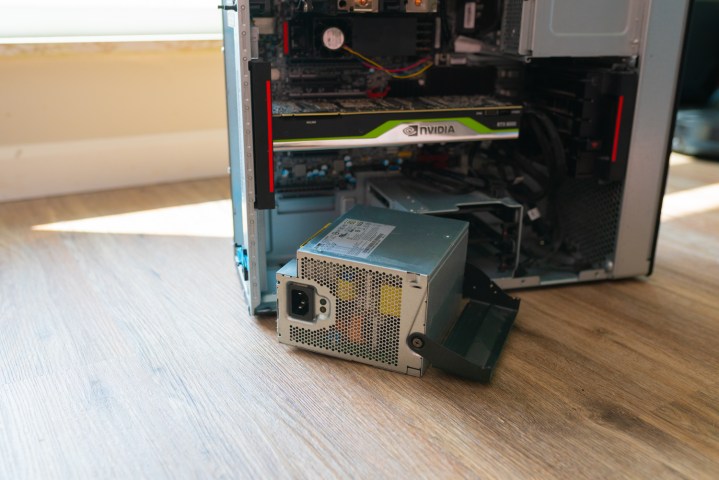
Like most things in a PC case, your power supply unit will either fit or it won’t. This depends on the form factor, but also the exact measurements of the PSU, which is why it’s best to look at its physical size and make sure that it’ll fit the case of your choice.
Most PSUs come in the ATX form factor, which should fit in the majority of desktop PCs. Mid-tower and full-tower cases can accommodate these units most of the time, but again, always double- and triple-check to make sure.
Small form factor PC users will have to give it more thought than that, though. PSUs are bulky, so the smaller your case and your PC, the higher the chance that it won’t fit — especially if it’s an ATX. There are SFX and SFX-L PSUs made for that exact reason, although they often provide lower wattage than their ATX counterparts. TFX PSUs are thin and used in slimline desktops. Lastly, Flex ATX PSUs exist, but they’re not used in consumer builds.
When shopping for a PSU, always make sure that it fits your case and is compatible with it.
Connectors
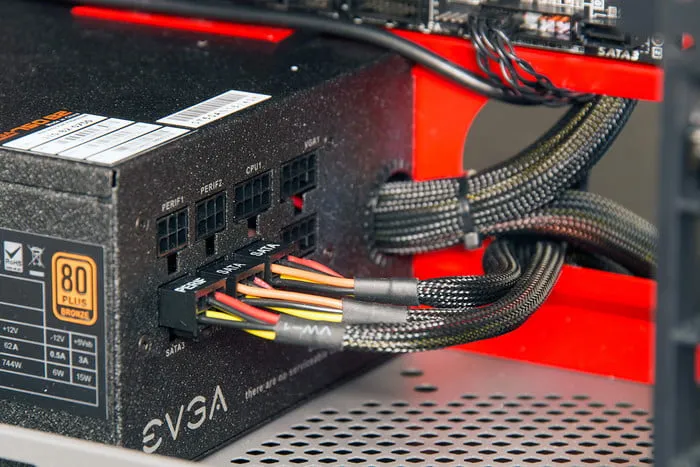
When you buy a PSU, it should come with just about all the cables you need in order to connect it to various components inside your PC — but again, proceed with caution and check to make sure.
First of all, a PSU can either be modular or non-modular, and if you have the option, you should usually pick the modular version over the non-modular. This is especially important if you want your cables to be tidy. Non-modular PSUs come with all of the cables soldered to the circuit board, so you won’t be able to pick and choose only the cabling that’s needed in your build. As a result, you’ll have random cables hanging off the side of your PSU with no purpose, affecting airflow slightly, but mostly aesthetics.
Modular PSUs may be harder to install if you’re new to building a PC, but they let you pick the exact cabling in your build, as the cables are not attached. Lastly, there are also semi-modular PSUs that come with some cables soldered on, leaving the option to remove some if necessary.
Aside from choosing between modular and non-modular, make sure that your PSU comes with all the connectors that you need. This usually won’t be a problem. You’ll find the 24-pin ATX connector that’s used for the motherboard, the 8-pin CPU connector that delivers power directly to the motherboard, and PCIe connectors that are used for the graphics cards. Some GPUs, such as the RTX 4090, come with their own adapters due to the fact that their connectors have more pins than a typical PSU provides.
Noise
The power supply usually won’t be the noisiest component inside your PC, but it might be loud when you’re running demanding games or applications. The PSU itself is silent, but it usually comes with an extra fan that can produce some noise when it’s running at its highest speed.
Is it possible to buy a PSU without a fan? Yes, it is, but it’s generally better to go for a quiet model that minimizes noise, but still provides some extra cooling. Remember that the stability of your PSU directly translates to the stability and performance of your entire computer, and a little bit of temperature control can go a long way.
Choosing the right PSU for your build

Now that you know which specifications you should keep a keen eye out for in your new power supply, there’s one question that most prospective buyers tend to ask themselves: Just how much power does my computer need?
There’s no cookie-cutter answer to that question. Depending on the components in your build, you might be able to get away with a 450W PSU, or you might need one of those 1,200W behemoths that belong in high-end builds. For many years, most gaming PCs were fine running at 750W or less, but those days are long gone now. If you have a PC made for content creation or AAA gaming, chances are that you definitely need a PSU with higher wattage.
Measuring PC power use varies based on whether you already have a PC and just want to swap the power supply, or you’re building an entirely new PC and need to pick a PSU that fits. In any case, using a PSU calculator is an easy way to do this. You essentially just need to add up the peak power of all the components in your PC and then leave some headroom for potential upgrades and power surges.
You might not be into overclocking right now, but you should still account for the possibility that you may want to do it one day. Intel and AMD processors both come with turbo/boost modes that consume drastically more power than the CPU needs when running at its base frequency. These kinds of things also need to be accounted for when picking the PSU, or you’ll risk having your PC shut down whenever it’s processing demanding workloads.
To figure out the wattage you need, use a PSU calculator. OuterVision’s PSU calculator can be useful if you want an in-depth and customizable analysis of wattage requirements, while the Newegg PSU calculator is approachable and lets you pick your parts easily. Once you add everything up, you’ll get the maximum wattage your PC might ever require. A safe bet is to leave at least 20% or 30% extra wattage for future upgrades just in case. You should never buy a PSU that can only deliver exactly as much power as is required.
One more thing to note is that your PSU adapts to how much power your computer currently needs. This means that even if you splurge on a 1,200-watt power supply, your computer won’t constantly draw 1,200 watts of power from the wall socket. It’ll only take as much as it needs to based on what you’re currently doing, although some of that will be wasted as heat.
How much should you spend on a PSU?
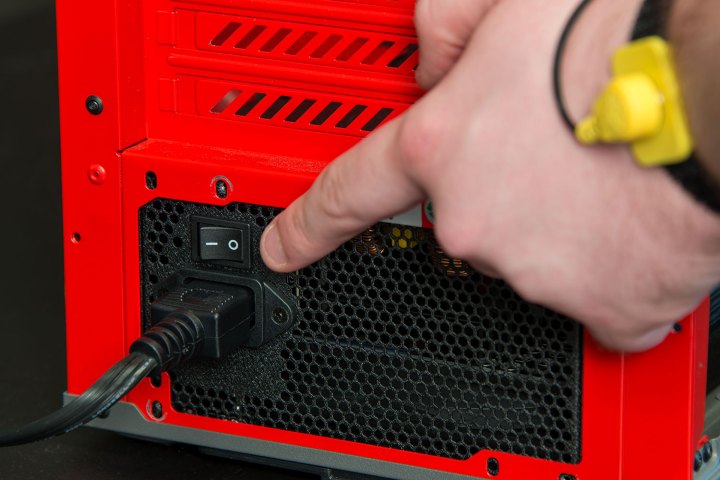
Much like any other component inside your PC, the PSU can be really cheap or outrageously expensive. In general, your best bet is to follow reputable sources when choosing a PSU. We have a list of the best power supply units that can give you an idea of the kind of brands you should be considering and also the exact models.
Some of the most recognized PSU brands include Corsair, Cooler Master, EVGA, Gigabyte, SeaSonic, Asus, MSI, and Thermaltake, but this is a non-exhaustive list. There are decent models from cheaper brands, too. The key is looking at wattage, compatibility, and efficiency, and then judging how that compares to the rest of your build.
There’s no one-size-fits-all advice for budget concerns when buying a PSU, but it should never be the most forgotten component in your entire build. Oftentimes, you’re better off spending an extra $30 on a Gold- or Platinum-rated PSU with plenty of wattage instead of putting that money toward better RAM or a slightly pricier motherboard. System stability is the number one concern in a new build, and if a better PSU can help you achieve it, my advice is to go for it.
There’s one good thing about PSUs that many people might not think about too often. Even if you build a new PC, the PSU is one of those components that can follow you to a brand-new computer and still do a good job. They often have long warranties, and if there’s anything wrong with yours, you’ll probably know right away due to issues like shutdowns or problems with booting the PC.
If there aren’t any problems, there also aren’t any serious reasons why you wouldn’t reuse the power supply in a new build. This makes it a fairly cost-effective, if overlooked part that really is worth every penny.
Editors' Recommendations
- Everything you need to know about buying a GPU in 2024
- What is Discord? What you need to know about the messaging app
- AMD FSR 3: everything you need to know about Fluid Motion Frames
- AMD FSR (FidelityFX Super Resolution): everything you need to know
- Everything you need to know about mini-ITX



